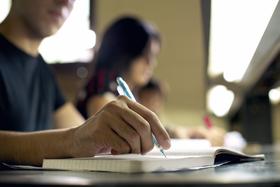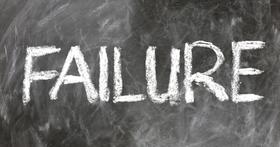Top Rankings
Wilson Area School District ranks among the top 20% of public school district in Pennsylvania for:
Category
Attribute
Graduation Rate
Highest graduation rate (Top 20%)
Diversity
Most diverse schools (Top 1%)
For the 2025-26 school year, there are 4 public elementary schools serving 1,391 students in Wilson Area School District. This district's average elementary testing ranking is 7/10, which is in the top 50% of public elementary schools in Pennsylvania.
Public Elementary Schools in Wilson Area School District have an average math proficiency score of 44% (versus the Pennsylvania public elementary school average of 39%), and reading proficiency score of 60% (versus the 54% statewide average).
Minority enrollment is 52% of the student body (majority Hispanic), which is more than the Pennsylvania public elementary school average of 42% (majority Hispanic and Black).
Overview
This School District
This State (PA)
# Schools
5 Schools
2,145 Schools
# Students
2,120 Students
1,108,977 Students
# Teachers
156 Teachers
82,943 Teachers
Student-Teacher Ratio
14:1
14:1
Student By Grade
District Rank
Wilson Area School District, which is ranked within the top 50% of all 678 school districts in Pennsylvania (based off of combined math and reading proficiency testing data) for the 2022-2023 school year.
The school district's graduation rate of 92% has decreased from 95% over five school years.
Overall District Rank
#218 out of 685 school districts
(Top 50%)
(Top 50%)
Math Test Scores (% Proficient)
43%
38%
Reading/Language Arts Test Scores (% Proficient)
61%
55%
Science Test Scores (% Proficient)
59%
57%
Graduation Rate
92%
87%
Students by Ethnicity:
Diversity Score
0.66
0.61
% American Indian
n/a
n/a
% Asian
4%
5%
% Hispanic
29%
16%
% Black
10%
15%
% White
49%
58%
% Hawaiian
n/a
n/a
% Two or more races
8%
6%
All Ethnic Groups
District Revenue and Spending
The revenue/student of $21,231 in this school district is less than the state median of $23,696. The school district revenue/student has stayed relatively flat over four school years.
The school district's spending/student of $17,937 is less than the state median of $23,119. The school district spending/student has stayed relatively flat over four school years.
Total Revenue
$45 MM
$39,541 MM
Spending
$38 MM
$38,578 MM
Revenue / Student
$21,231
$23,696
Spending / Student
$17,937
$23,119
Best Wilson Area School District Public Elementary Schools (2025-26)
School
(Math and Reading Proficiency)
(Math and Reading Proficiency)
Location
Quick Facts
Rank: #11.
Williams Township Elementary School
(Math: 80-84% | Reading: 75-79%)
Rank:
Rank:
10/
Top 5%10
2660 Morgan Hill Rd
Easton, PA 18042
(484) 373-6170
Easton, PA 18042
(484) 373-6170
Gr: K-4 | 240 students Student-teacher ratio: 13:1 Minority enrollment: 30%
Rank: #22.
Wilson Borough Elementary School
(Math: 60-64% | Reading: 60-64%)
Rank:
Rank:
8/
Top 30%10
301 S 21st St
Easton, PA 18042
(484) 373-6220
Easton, PA 18042
(484) 373-6220
Gr: K-4 | 292 students Student-teacher ratio: 11:1 Minority enrollment: 60%
Rank: #33.
Avona Elementary School
(Math: 55-59% | Reading: 45-49%)
Rank:
Rank:
6/
Top 50%10
2317 Front Street
Easton, PA 18042
(484) 373-6250
Easton, PA 18042
(484) 373-6250
Gr: K-4 | 201 students Student-teacher ratio: 13:1 Minority enrollment: 69%
Rank: #44.
Wilson Area Intermediate School
(Math: 34% | Reading: 59%)
Rank:
Rank:
5/
Bottom 50%10
2400 Firmstone St
Easton, PA 18042
(484) 373-6110
Easton, PA 18042
(484) 373-6110
Gr: 5-8 | 658 students Student-teacher ratio: 13:1 Minority enrollment: 52%
Recent Articles

Charter Schools vs Public Schools 2025: Key Differences & Trends
Explore updated 2025 insights comparing charter schools vs public schools, enrollment, academic outcomes, funding, and real-world examples for families and educators.

Are Public Schools Ready for the 21st Century? 2025 Update
Explore 2025 insights on whether public schools are ready for the 21st century, covering performance, technology, equity, funding, and future-ready learning.

Public School Open House & Enrollment Season Guide
A parent-focused guide to the public school open house and enrollment season, with expert questions, timelines, and decision tips.





